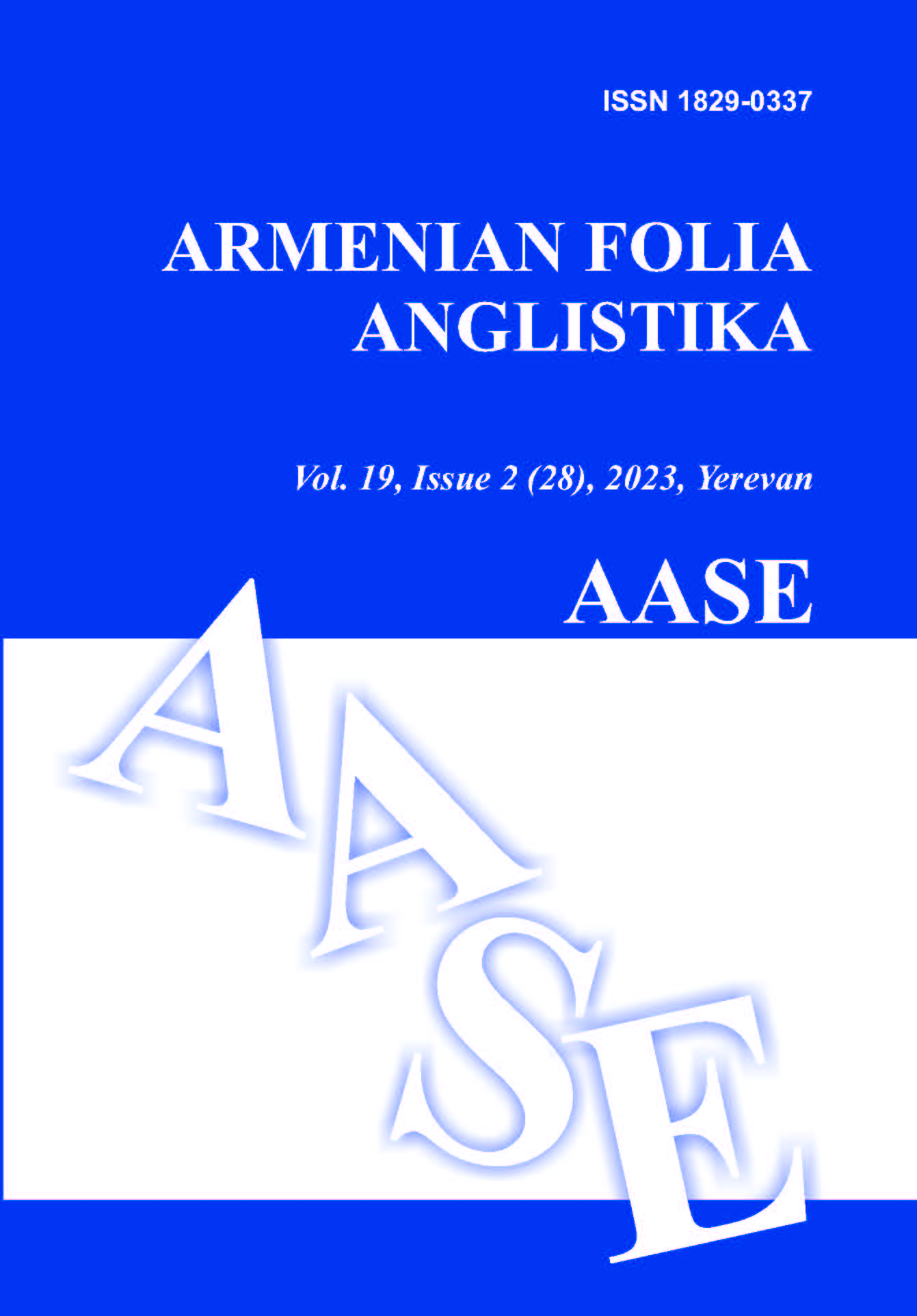LINGUISTIC EXPRESSION OF GENDER DISTINCTIONS IN ENGLISH PROVERBS AND SAYINGS
DOI:
https://doi.org/10.46991/AFA/2023.19.2.062Keywords:
paremiological unit, proverbs, sayings, folklore, gender componentAbstract
The present study aims at investigating the linguistic expression of gender distinctions in English proverbs and sayings through the lens of paremiology. The investigation focuses on the classification of English proverbs and sayings according to their respective gender component. Our research hypothesis posits that proverbs and sayings, as forms of verbal folklore, have traditionally ascribed specific human traits and activities to individuals based on their gender. To test this hypothesis, over four hundred English proverbs and sayings have been analyzed. The methodology employed in the paper is based on historical research methods, which involve collecting and analyzing information in order to explain past phenomena. The analysis has also employed the data grouping method to organize proverbs and sayings into relevant categories. The data collection has utilized both primary and secondary sources of information. Primary sources include reviews and scientific articles, while in secondary sources are include encyclopedias and dictionaries of proverbs and sayings. The results show that proverbs and sayings reflect gender stereotypes and societal divisions which are often difficult to break. However, the deeper understanding of the ways in which gender roles have been constructed and perpetuated throughout history, can identify areas in which progress towards gender equality is made.
Downloads
References
Gender and biodiversity. (n.d.) In Convention on Biological Diversity. Retrieved February 16, 2022.
Kirsanova, M. (2018). Androcentrism of English proverbs and anti-provers with genger components. Journal of Language and Education, 4(2), 68-77. https://doi.org/10.17323/2411-7390-2018-4-2-68-77
Liddell, H.G., & Scott, R. (1843). A Greek English lexicon. Oxford: Clarendon Press.
Mieder, W. (1985) Popular view on proverbs. Proverbium, vol 2. University of Vermont Press.
Moran, W.L. (1978). An assyriological gloss on the new archilochus fragmen. Harvard Studies in Classical Philology 82, 17-82.
Norrick, N.R. (1985). How proverbs mean: semantic studies in English proverbs, Amsterdam: Mouton.
Rong, H. (2013). Proverbs reveal cultural diversity. Cross Cultural Communication, 9 (2), 31-55.
Virginia Wolf’s quote. (n.d.). In The Big Books of Fall. Retrieved March 7, 2022.
Sources of Data
Cambridge Dictionary. (2022). Retrieved January 15, 2022.
Collins English Dictionary.(2023). Retrieved January 14, 2022.
Bland, R.. (1814). Adagia of Erasmus with explanations and further illustrated by corresponding examples from the Spanish, Italian, French and English languages; M. D. F. S. A. vol. I. Printed for T. Egeton, Military Library, WHITEHALL, London.
English proverbs on woman. (2020). In Inspirational Stories: The Power of Words. Retrieved January 14, 2022.
Hazlitt, W.C. (1996). English proverbs and proverbial phrases. London: Reeves and Turner Publishers.
Litovkina, A.T. (2017). Teaching proverbs and anti-proverbs. Komaron.
Mieder, W., &Litovkina, A. (2002). Twisted wisdom: modern anti-proverbs. University of Vermont Press.
Oxford Dictionary of Proverbs. (2015). In Oxford Reference. Sixth edition. J. Speake (Ed.). Retrieved January 14, 2022.
Proverbs. (2016). In The Bible. Retrieved March 7, 2022.
Common proverbs in English: meanings and examples. (2022) In BIJU’S. Retrieved February 16, 2022.
Schipper, M. (2006). Never marry a woman with big feet, women in proverbs from all around the world. Amsterdam University Press.
,500 English idioms, phrases and proverbs that we use every day, with their meanings and origins explained. (n.d.). In Phrase Finder. Retrieved November 30, 2021.
Downloads
Published
Issue
Section
License
Copyright (c) 2023 Author(s)

This work is licensed under a Creative Commons Attribution-NonCommercial 4.0 International License.














